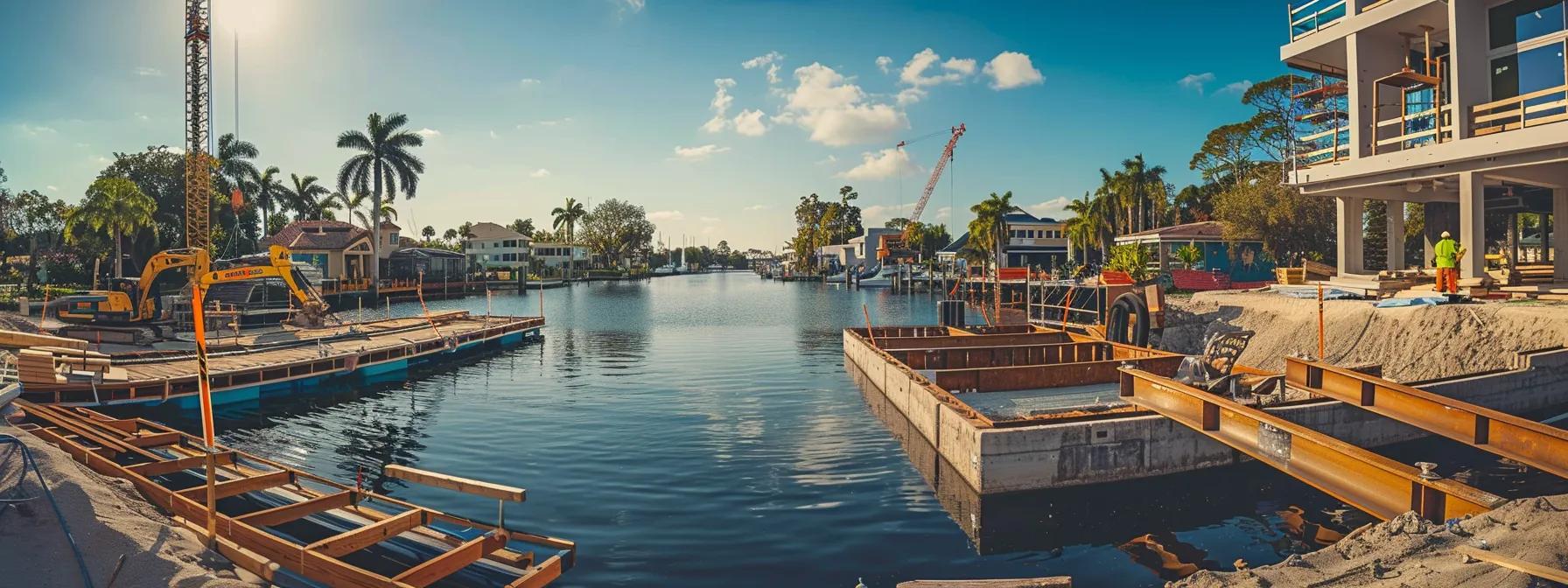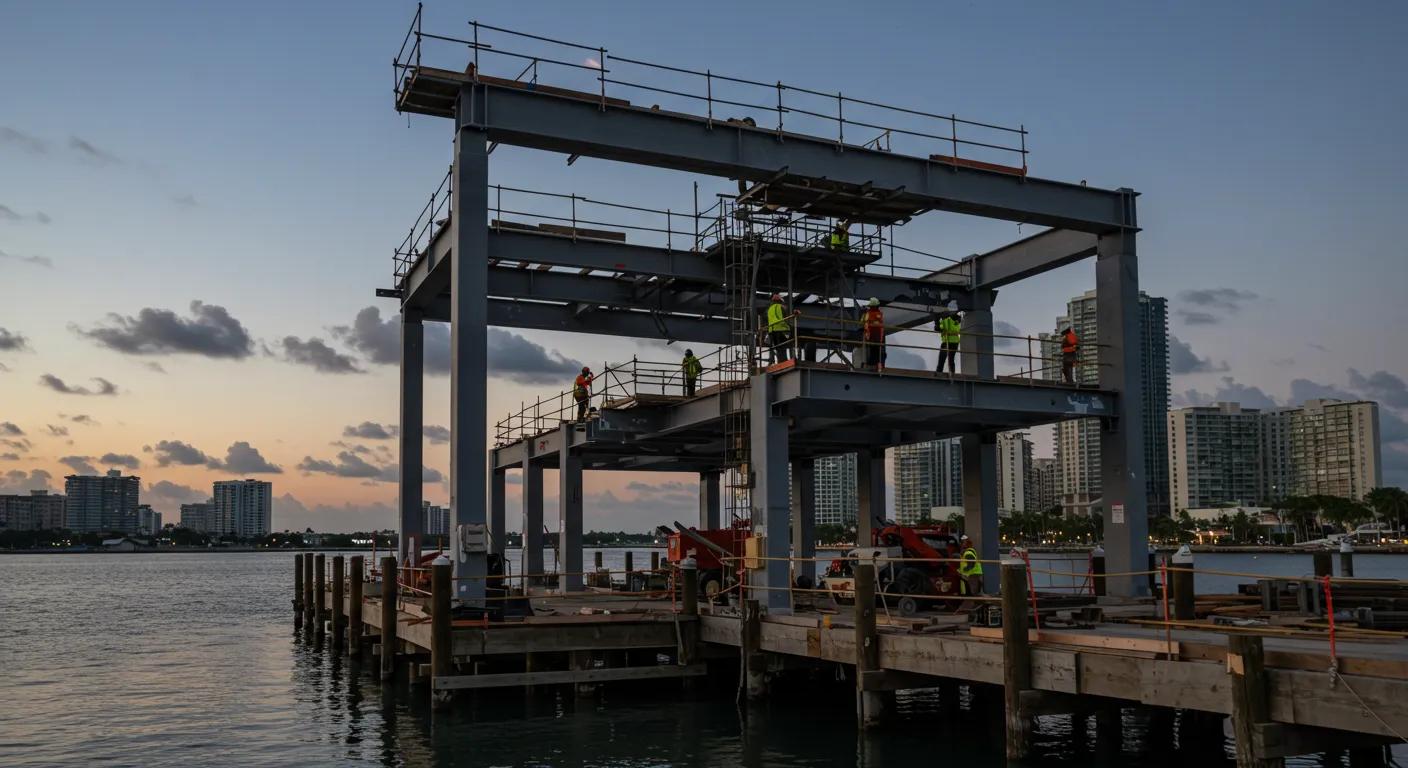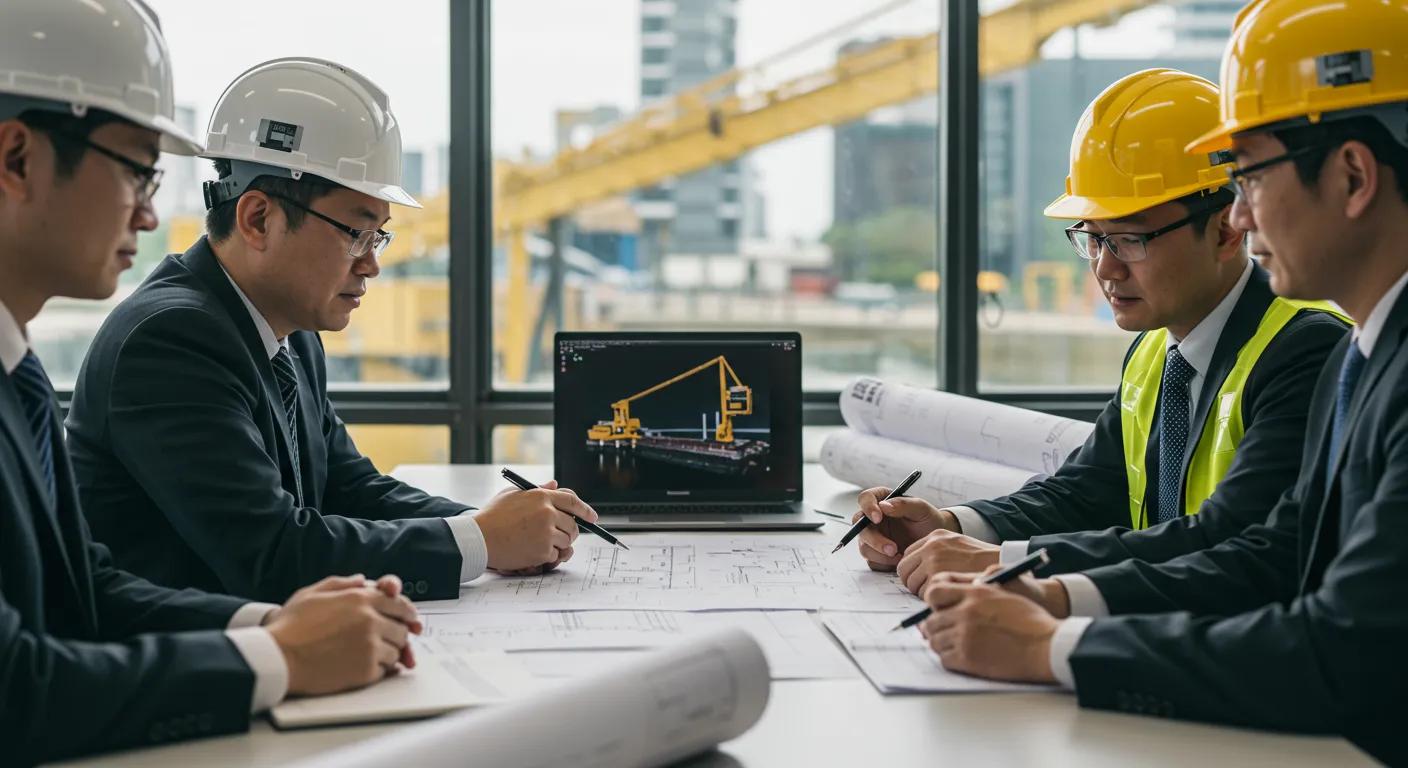Floating Docks vs. Stationary Docks: Which Option Is Best for Your Waterfront?
When choosing a dock for your waterfront property, you must consider functionality, construction, environmental impact, and long-term maintenance. Waterfront docks enhance a property’s appeal and provide essential access for recreational, commercial, or residential use. In this article, we discuss floating and stationary dock systems, explaining how they work, their advantages and disadvantages, installation differences, and maintenance issues. Understanding these two systems will empower you to select the dock option that fits your lifestyle, budget, and waterfront needs.
Defining Floating and Stationary Docks for Your Property
Floating docks and stationary docks are two distinct approaches to accessing waterfronts. Floating docks use buoyancy to remain on the water’s surface, adapting to changing water levels, while stationary docks (or fixed piers) are anchored permanently to the seabed or lakebed to provide an unmovable platform. Both types can be built from materials like wood, metal, or composite polymers and offer unique benefits regarding durability, sustainability, and maintenance.
Understanding How Floating Dock Systems Function
Floating dock systems are built from buoyant materials such as sealed polyethylene or foam. Their design allows the structure to rise and fall with the water level, maintaining stability even when weight is added by pontoon boats, canoes, or other watercraft. A modular design offers homeowners flexibility to rearrange or expand the dock as needed. Their buoyant nature also reduces environmental impact by minimizing damage to the underwater ecosystem through less intrusive anchoring.
Grasping the Structure of Fixed Pier Systems
Stationary docks involve more extensive construction. They use pilings, concrete footings, or heavy-duty supports that are driven deep into the seabed or lakebed to keep the dock in place, regardless of water level changes. This fixed structure provides a consistently stable platform ideal for docking large boats, installing boat lifts, or supporting permanent waterfront amenities. Their construction demands significant site preparation, including soil testing and underwater surveys, ensuring that the structure is built for lasting performance.
Key Distinctions Impacting Waterfront Suitability
The decision between floating and stationary docks depends on several factors. Floating docks adapt easily to fluctuating water levels and are ideal for lakes, ponds, or tidal environments. Stationary docks, with their solid anchorage, are preferable when water levels are stable, such as in rivers with consistent flow or coastal areas with seawalls. Key considerations include load capacity (stationary docks can support heavier weights) and the complexity of installation, with floating docks typically requiring fewer disruptions.
Materials Commonly Used for Each Dock Type
Material selection is critical for dock performance and longevity. Floating docks are commonly constructed with high-density polyethylene, marine-grade aluminum, or composite materials that resist decay and corrosion while providing buoyancy. Stationary docks are often built from treated lumber, steel, or reinforced concrete. Treated wood gives a natural look yet needs regular maintenance, while steel and concrete offer robust performance with higher initial costs and specialized installation methods.
What Are the Advantages of Floating Docks for Waterfront Properties
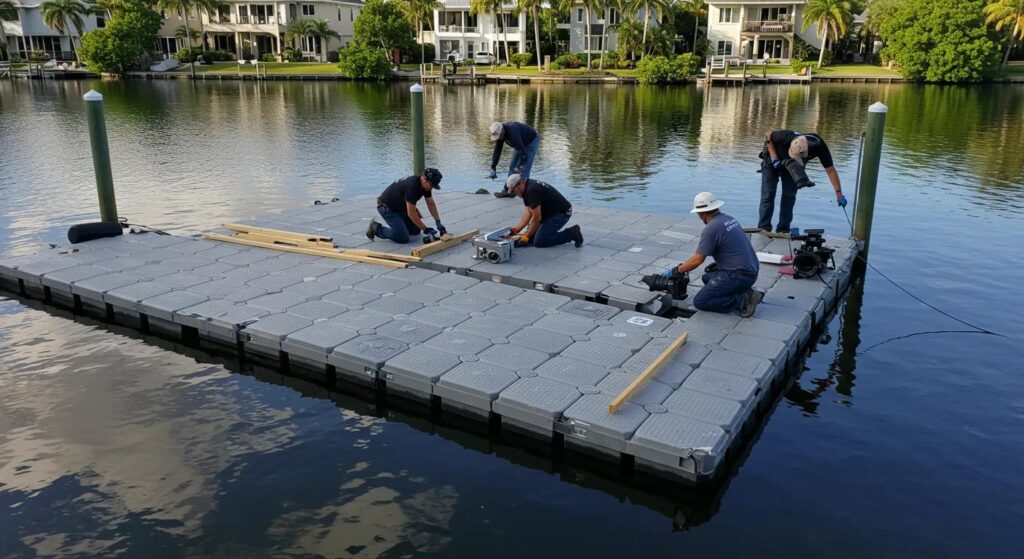
Floating docks provide several advantages that make them popular among waterfront owners. Their design adapts seamlessly to changing water levels, ensuring a level, accessible deck regardless of tides or seasonal variations. They generally involve simpler and less invasive installation processes than fixed systems, with fewer heavy anchoring requirements. Overall, floating docks combine adaptability, ease of installation, and a lower environmental footprint.
Adapting to Fluctuating Water Levels With Ease
One major advantage of floating docks is their ability to adjust to rising and falling water. Whether high tides, seasonal rains, or drought conditions occur, these docks maintain a horizontal deck that remains safe and functional. This self-adjusting capability minimizes structural stress and potential damage, making them reliable even where water levels are unpredictable.
Versatility in Configuration and Relocation Possibilities
The modular design of floating docks offers high versatility. Homeowners can easily reconfigure or relocate the dock in response to changes in property use or water conditions. This flexibility ensures the dock remains useful over time and can be adapted to evolving preferences without the need for extensive reconstruction.
Simpler Installation Processes Compared to Fixed Structures
Floating docks typically require limited site preparation, avoiding invasive underwater construction. Their assembly—often a DIY process involving interlocking modules—reduces both installation time and labor costs. For those who prefer a quicker setup and minimal disruption to the natural environment, floating docks are an attractive choice.
Reduced Environmental Impact on Aquatic Ecosystems
Because they do not require permanent pilings or heavy anchors, floating docks cause minimal disruption to the seabed or lakebed. This non-invasive installation protects sensitive aquatic habitats, making them a preferred option for eco-conscious property owners seeking to limit their environmental footprint.
Suitability for Deep Water or Soft Lakebeds
Floating docks excel in locations where the water is deep or the lakebed is soft, as they do not depend on a solid foundation. In conditions where stationary docks might demand costly groundwork or be impractical, floating docks provide reliable access without extensive modifications to the natural landscape.
What Are the Advantages of Stationary Docks for Waterfront Properties
Stationary docks offer their own set of benefits, especially where stability and high load support are required. They provide a fixed and robust platform, making them ideal for heavy watercraft, permanent installations like boat lifts, or built-in amenities. Although their installation is more complex and involves invasive site work, their durability and reliability make them a strong option for long-term use.
Offering Unmatched Stability and Solid Footing
The key strength of stationary docks is their exceptional stability. Firmly anchored to the seabed or lakebed, they maintain a consistent position even during turbulent conditions. This stability is critical for activities that require a secure base, such as docking large boats or setting up a fixed recreational area.
Superior Durability Against Harsh Weather Conditions
Constructed from robust materials like treated wood, steel, or reinforced concrete, stationary docks are designed to withstand severe weather, including high winds, heavy rains, and corrosive saltwater exposure. Their construction provides a long-lasting solution with fewer maintenance requirements, making them a reliable investment where extreme conditions are common.
Ideal for Specific Waterfront Activities and Permanent Fixtures
For properties with permanent watercraft, diving platforms, or facilities like boat lifts and fishing platforms, stationary docks are advantageous. Their permanent nature ensures that fixtures remain securely attached and functional, supporting commercial or heavy recreational uses without the uncertainty that comes with floating systems.
Potential for Greater Longevity With Proper Construction
When built with high-quality materials and proper construction techniques, stationary docks can last over 30 years. Although the upfront cost is higher and repairs can be more involved, the long-term durability and reduced need for frequent component replacement often justify the investment.
Supporting Heavier Loads and Larger Vessels
Stationary docks are engineered to support substantial loads, making them essential for accommodating large boats, heavy equipment, and commercial needs. Their fixed structure offers reliable performance and enhanced safety margins, particularly in environments where maximum weight support is critical.
Critical Factors for Selecting Your Ideal Waterfront Dock
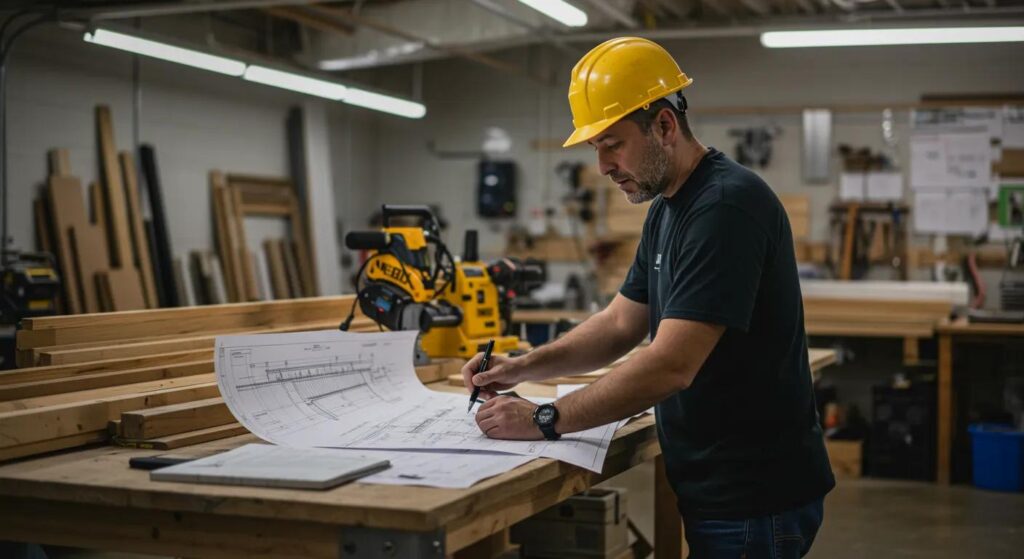
Selecting the best dock involves assessing several critical factors. These include the natural characteristics of your property, your intended usage, local permitting and regulatory requirements, long-term maintenance considerations, and budget constraints. A careful evaluation of these factors ensures that your dock investment meets both functional and aesthetic needs.
Assessing Your Specific Waterfront Conditions and Geography
Examine your property’s water depth, tidal range, current strength, and the composition of the lakebed or seabed. For example, soft sediment may favor a floating dock, while stable, shallow waters can better support a fixed structure. Local climate factors, like storm frequency and saltwater exposure, further influence the optimal dock choice.
Matching Dock Type to Your Intended Uses and Activities
Determine your primary dock use—whether it is for recreational purposes like kayaking and fishing or for handling larger watercraft and permanent installations. Seasonal usage patterns may also affect the design considerations, as docks intended for year-round use might need different specifications than those used only in summer months.
Navigating Local Permitting and Regulatory Requirements
Prior to installation, review local zoning laws, building codes, and environmental regulations. Different dock types may face varied permitting challenges, especially regarding mooring systems and underwater impact. Early consultation with local authorities can help avoid legal complications and ensure compliance.
Considering Long-Term Upkeep and Repair Needs
Both dock types incur ongoing maintenance costs. Floating docks may require frequent inspections and minor repairs due to constant movement, while stationary docks, though robust, might need periodic structural repairs or repainting. Evaluate these long-term considerations in relation to your budget to choose a system that is sustainable over time.
Evaluating Your Budget for Initial Investment and Ongoing Costs
Budget plays a major role in dock selection. Floating docks often have lower initial installation costs due to simpler, less invasive construction methods, though they may incur more frequent smaller repairs. On the other hand, stationary docks require a higher upfront investment for groundwork and materials but can offer reduced long-term maintenance expenses.
Installation Nuances: Floating Versus Fixed Dock Systems
Installation requirements differ significantly between floating and stationary docks. Factors such as installation timelines, site preparation, and technical demands affect cost and functionality. Understanding these nuances is essential whether you opt for a DIY project or professional installation.
Typical Installation Timeframes for Floating Docks
Due to their modular design and minimal excavation needs, floating docks can typically be installed in a few days to a couple of weeks. This quick setup minimizes labor costs and environmental disruption, allowing homeowners to enjoy their dock sooner.
Requirements for Installing Stationary Dock Pilings
Stationary docks require extensive preparation, including driving pilings and setting concrete footings. This labor-intensive process involves site surveys and geotechnical testing, often extending installation time from several weeks to a few months, but it ensures a robust foundation for heavy loads.
Comparing Site Preparation Needs for Each Option
Floating docks require little groundwork since they float on the surface, whereas stationary docks need significant site preparation such as dredging and soil compaction. This difference contributes to higher upfront costs for fixed systems and impacts the overall construction timeline.
DIY Potential Versus Professional Installation for Both Types
Floating docks, with their simple modular assembly, offer greater potential for DIY installation, lowering labor costs for experienced homeowners. In contrast, the complex foundation requirements of stationary docks typically necessitate professional expertise to ensure safety and regulatory compliance.
Long-Term Maintenance and Durability Showdown
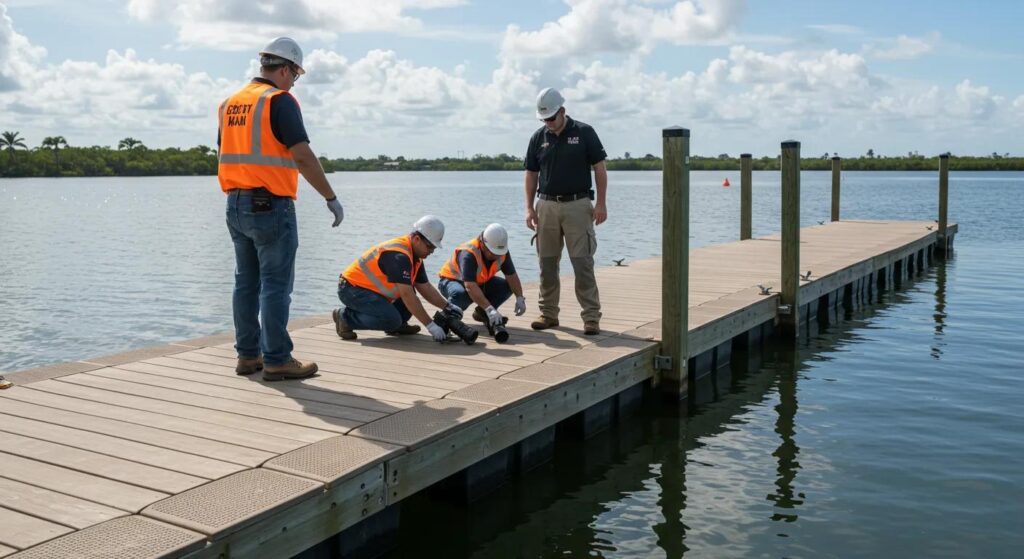
Long-term maintenance is vital for preserving dock functionality. While floating docks require regular cleaning and minor repairs due to movement, stationary docks may demand periodic structural evaluations and more extensive repair work. Both systems, when properly maintained, provide reliable performance over many years.
Routine Care for Floating Dock Components
Maintenance of floating docks involves periodic cleaning of deck surfaces and buoyant modules to remove algae, debris, and salt deposits. Regular inspections help detect UV damage or wear early, and modular components can be realigned or replaced as needed to maintain a level, safe surface.
Maintaining the Integrity of Stationary Dock Structures
Fixed docks require inspections of pilings, concrete joints, and connection points to identify early signs of damage such as cracking, corrosion, or rot. Periodic re-coating and timely replacement of worn components are essential to preserve structural integrity, even if these steps are more intensive than those for floating docks.
Lifespan Expectations for Floating and Fixed Docks
A well-maintained floating dock can last 15–25 years, with the benefit of replacing individual modules as needed. In contrast, a stationary dock built with robust materials may exceed 30 years but can involve more complicated and costly repairs when issues arise.
Repair Considerations Specific to Each Dock System
Floating dock repairs tend to be less invasive, typically addressing individual module damage or loose fittings. Stationary dock repairs can require structural reinforcement or partial reconstruction, making them potentially more disruptive and expensive.
Weather Resistance and Seasonal Adjustments for Optimal Performance
Both dock types must endure varying weather conditions. Floating docks adapt easily to seasonal water level changes but can suffer from continuous UV exposure. Stationary docks require strong construction to resist heavy rains, freezing temperatures, and saltwater corrosion. Seasonal maintenance, such as winterization or protective coating refreshment, is essential for optimizing performance and longevity.
Table: Comparison of Floating and Stationary Dock Key Attributes
Before reviewing long-term maintenance details, consider this summary table:
| Attribute | Floating Docks | Stationary Docks |
|---|---|---|
| Stability | Adapts with water level changes | Firmly anchored, high stability |
| Installation Timeframe | Fast, modular setup | Time-intensive, extensive groundwork |
| Material Options | HDPE, foam, composite polymers | Treated wood, steel, concrete |
| Environmental Impact | Minimal seabed disruption | Higher due to anchoring |
| Maintenance Frequency | Regular cleaning and module checks | Periodic structural repairs |
| Load Capacity | Suitable for lighter loads | Better for heavier loads |
| Lifespan | Approximately 15–25 years | Generally 30+ years |
| Flexibility | Highly adaptable and reconfigurable | Permanent, fixed layout |
This table condenses the main differences, helping you weigh the benefits of flexibility and rapid installation against the stability and load capacity of stationary docks.
Long-Term Maintenance and Durability Showdown Summary
Regular maintenance is essential to preserve dock functionality and appearance. Floating docks benefit from routine care with simpler repairs, while stationary docks require periodic structural inspections. With proper care, floating docks offer a lifespan of 15–25 years, and stationary docks can extend beyond 30 years, depending on usage and environmental conditions.
Frequently Asked Questions
Q: How do I decide between a floating and a stationary dockfor my waterfront? A: Evaluate your water depth, tidal variations, and seabed composition along with your intended usage. Floating docks suit properties with varying water levels and simpler builds, while stationary docks provide the stability needed for heavy loads and permanent fixtures.
Q: What are the typical maintenance requirements for floating docks? A: They need regular cleaning to remove algae and debris, periodic inspections for UV or material damage, and occasional module adjustments or replacements.
Q: Are stationary docks more expensive to install than floating docks? A: Yes. Stationary docks require extensive groundwork, pilings, and concrete, leading to higher upfront costs, though they may offer cost savings later due to lower repair frequency.
Q: Can I install a dockmyself, or should I hire professionals? A: Floating docks often have DIY potential due to their modular design. Stationary docks usually need professional installation because of their complex foundation and engineering demands.
Q: What is the environmental impact of either dock? A: Floating docks are more eco-friendly since they minimize disruption to the seabed. Stationary docks, while offering more stability, might disturb the underwater environment during installation.
Q: How can I extend the lifespan of my docksystem? A: Regular maintenance is key—clean and inspect floating docks frequently, and for stationary docks, perform annual checks, reinforce protective coatings, and address any structural issues promptly.
Q: Which docktype is better for areas with extreme weather? A: Stationary docks are generally more robust in extreme weather due to their solid construction. However, a floating dock built from high-quality, weather-resistant materials can also perform well if water levels vary significantly.
Final Thoughts
In summary, both floating and stationary docks offer distinct advantages based on environmental conditions and intended usage. Floating docks provide flexibility, ease of installation, and minimal environmental impact—ideal for properties with varying water levels. Stationary docks offer unmatched stability, higher load capacity, and long-term durability for heavy usage and permanent applications. By carefully evaluating local geography, budget, maintenance needs, and waterfront activities, you can choose the dock system that best enhances your property’s functionality and aesthetic appeal. Thoughtful planning and regular upkeep are essential to maximize the benefits and longevity of your waterfront investment.

